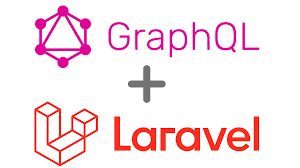In the world of web development, creating efficient and performant APIs is crucial for building modern applications. Traditional RESTful APIs have been the go-to solution for many years, but they can sometimes become complex and cumbersome to work with. Enter GraphQL, a query language for APIs that offers flexibility and efficiency. When combined with Laravel, a popular PHP framework, developers can harness the power of GraphQL to build robust and scalable APIs. In this blog post, we will explore the benefits of using GraphQL with Laravel and how they work together seamlessly to enhance GraphQL API development.
What is GraphQL?
GraphQL is an open-source query language for APIs and a runtime for executing those queries with existing data. It was developed by Facebook and publicly released in 2015. The main idea behind GraphQL is to provide a more efficient and flexible alternative to traditional RESTful APIs. Instead of requesting fixed data structures, clients can send queries specifying the exact data they need. This eliminates the problem of over-fetching or under-fetching data, which is common with RESTful APIs.
Why use GraphQL with Laravel?
-
Efficient data fetching: With RESTful APIs, multiple requests are often required to fetch related data, leading to over-fetching or under-fetching of data. GraphQL solves this problem by allowing clients to request only the data they need in a single query, reducing the number of round trips to the server and minimizing data transfer.
-
Flexible and intuitive queries: GraphQL provides a flexible query language that allows clients to specify the exact data they need, including nested relationships. This empowers frontend developers to retrieve all the required data in a single request, without relying on backend changes. The self-documenting nature of GraphQL also makes it easier for developers to understand and work with the API.
-
Versioning and backward compatibility: As applications evolve, APIs often need to undergo changes. Traditional RESTful APIs can face challenges when introducing breaking changes or supporting multiple versions. GraphQL addresses this problem by allowing clients to request specific fields and versions, eliminating the need for versioned endpoints. This enables backward compatibility without affecting existing queries.
-
Increased development speed: Laravel, known for its developer-friendly features, combined with the flexibility of GraphQL, significantly improves development speed. Laravel provides a solid foundation for building APIs with its powerful routing, database migration, and query builder capabilities. By leveraging the eloquent ORM, Laravel developers can easily map GraphQL queries to database models, reducing the time and effort required to build APIs.
Getting started with GraphQL and Laravel
To use GraphQL with Laravel, you'll need to install the necessary packages and set up the required configurations. Here's a brief overview of the steps involved:
-
Install the GraphQL server package: Laravel offers several GraphQL server packages like Lighthouse and GraphQLite. Choose the one that suits your requirements and install it using Composer.
-
Define GraphQL schema: Create a schema file that describes the available types, queries, and mutations in your API. GraphQL schemas define the structure of the data that can be queried.
-
Implement resolvers: Resolvers are responsible for fetching the data requested by GraphQL queries. In Laravel, you can define resolvers as methods in your controller classes, mapping the queries to the appropriate data retrieval logic.
-
Define routes and endpoints: Create routes in Laravel that point to the GraphQL controller and map them to specific endpoints.
-
Test and refine: Test your GraphQL API using tools like GraphiQL or Postman, and refine your schema and resolvers as needed.
Conclusion
Combining GraphQL with Laravel opens up a world of possibilities for building efficient and flexible APIs. The combination of GraphQL's powerful query language and Laravel's developer-friendly features provides a streamlined development experience, faster data retrieval, and increased scalability. Whether you're building a small application or a large-scale enterprise system, GraphQL and Laravel make a winning combination for API development. Embrace the power of GraphQL and Laravel to take your API development to new heights of efficiency and flexibility. Happy coding!
